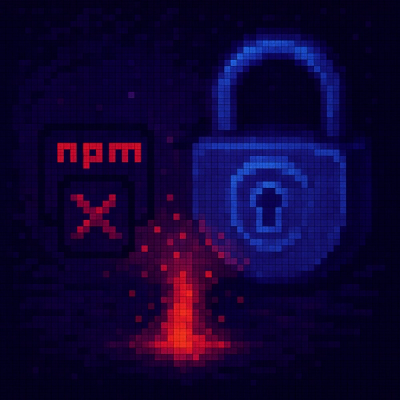Simple and powerful interface for ClickHouse


npm install @posthog/clickhouse
Fork of @apla/clickhouse.
Synopsis
const ClickHouse = require('@posthog/clickhouse')
const ch = new ClickHouse({ host, port, user, password })
const stream = ch.query('SELECT 1', (err, data) => {})
stream.pipe(process.stdout)
await ch.querying('CREATE DATABASE test')
Examples:
API
new ClickHouse(options: Options)
Options
host | ✓ | | Host to connect. |
user | | | Authentication user. |
password | | | Authentication password. |
path (pathname) | | / | Pathname of ClickHouse server. |
port | | 8123 | Server port number. |
protocol | | 'http:' | 'https:' or 'http:'. |
dataObjects | | false | By default (false), you'll receive array of values for each row.
If you set dataObjects: true, every row will become an object with format: { fieldName: fieldValue, … }.
Alias to format: 'JSON'. |
format | | JSONCompact | Adds the FORMAT statement for query if it did not have one.
Specifies format of selected or inserted data.
See "Formats for input and output data" to find out possible values. |
queryOptions | | | Object, can contain any ClickHouse option from Settings, Restrictions and Permissions.
See example. |
readonly | | false | Tells driver to send query with HTTP GET method. Same as readonly=1 setting. More details. |
timeout,
headers,
agent,
localAddress,
servername,
etc… | | | Any http.request or https.request options are also available. |
Options example:
const ch = new ClickHouse({
host: 'clickhouse.msk',
dataObjects: true,
readonly: true,
queryOptions: {
profile: 'web',
database: 'test',
},
})
clickHouse.query(query, [options], [callback])
Sends a query statement to a server.
query: string
SQL query statement.
options: Options
The same Options, excluding connection options.
callback: (error, result) => void
Will be always called upon completion.
It supports .pipe to process records.
You should have at least one error handler listening. Via query callback or via stream error event.
'error' | Query execution finished with error.
If you have both query callback and stream error listener, you'll have error notification in both listeners. |
'metadata' | When a column information is parsed. |
'data' | When a row is available. |
'end' | When entire response is processed. Regardless of whether there is an 'end' listener, the query callback are always called. You should always listen to 'data' event together with 'end' event.
"The 'end' event will not be emitted unless the data is completely consumed."
If you don't need to handle 'data' event prefer to use only callback or Promise interface. |
stream.supplemental
After response is processed, you can read a supplemental response data from it, such as row count.
Examples:
clickHouse.ping(callback)
Sends an empty query.
Doesn't requires authorization.
callback: (error, result) => void
Will be called upon completion.
Promise interface
Promise interface is not recommended for INSERT and SELECT queries.
INSERT can't do bulk load data with promise interface.SELECT will collect entire query result in the memory. See the Memory size section.
With promise interface query result are parsed synchronously.
This means that large query result in promise interface:
- Will synchronously block JS thread/event loop.
- May lead to memory leaks in your app due peak GC loads.
Use it only for queries where resulting data size is is known and extremely small.
The good cases to use it is DESCRIBE TABLE or EXISTS TABLE
clickHouse.querying(query, [options])
Similar to ch.query(query) but collects entire response in memory and resolves with complete query result.
See the Memory size section.
options: Options
The same Options, excluding connection options.
Returns: Promise
Will be resolved with entire query result.
Example of promise interface.
clickHouse.pinging()
Promise interface for .ping.
Returns: Promise
How it works
Bulk data loading with INSERT statements
INSERT can be used for bulk data loading. There is a 2 formats easily implementable
with javascript: CSV and TabSeparated/TSV.
CSV is useful for loading from file, thus you can read and .pipe into clickhouse
file contents.
To activate CSV parsing you should set format driver option or query FORMAT statement to CSV:
var csvStream = fs.createReadStream('data.csv')
var clickhouseStream = ch.query(statement, { format: CSV })
csvStream.pipe(clickhouseStream)
TSV is useful for loading from file and bulk loading from external sources, such as other databases.
Only \\, \t and \n need to be escaped in strings; numbers, nulls,
bools and date objects need some minor processing. You can send prepared TSV data strings
(line ending will be appended automatically), buffers (always passed as is) or Arrays with fields.
Internally, every field will be converted to the format which ClickHouse can accept.
Then escaped and joined with delimiter for the particular format.
If you ever need to store rows (in arrays) and send preformatted data, you can do it.
ClickHouse also supports JSONEachRow format
which can be useful to insert javascript objects if you have such recordset.
const stream = ch.query(statement, { format: 'JSONEachRow' })
stream.write(object)
stream.end()
Memory size
You can read all the records into memory in single call like this:
var ch = new ClickHouse({ host: host, port: port })
ch.querying('SELECT number FROM system.numbers LIMIT 10', (err, result) => {
})
In this case whole JSON response from the server will be read into memory,
then parsed into memory hogging your CPU. Default parser will parse server response
line by line and emits events. This is slower, but much more memory and CPU efficient
for larger datasets.
Examples
Selecting with stream:
const readableStream = ch.query('SELECT * FROM system.contributors FORMAT JSONEachRow', (err, result) => {})
const writableStream = fs.createWriteStream('./contributors.json')
readableStream.pipe(writableStream)
Inserting with stream:
const readableStream = fs.createReadStream('./x.csv')
const writableStream = ch.query('INSERT INTO table FORMAT CSV', (err, result) => {})
readableStream.pipe(writableStream)
Insert single row of data:
const ch = new ClickHouse(options)
const writableStream = ch.query(`INSERT INTO table FORMAT TSV`, (err) => {
if (err) {
console.error(err)
}
console.log('Insert complete!')
})
writableStream.write([1, 2.22, 'erbgwerg', new Date()])
writableStream.write('1\t2.22\terbgwerg\t2017-07-17 17:17:17')
writableStream.end()
Selecting large dataset:
const ch = new ClickHouse(options)
const stream = ch.query('SELECT * FROM system.numbers LIMIT 10000000')
stream.on('metadata', (columns) => {
})
let rows = []
stream.on('data', (row) => rows.push(row))
stream.on('error', (err) => {
})
stream.on('end', () => {
console.log(
rows.length,
stream.supplemental.rows,
stream.supplemental.rows_before_limit_at_least
)
})
Inserting large dataset:
const ch = new ClickHouse(options)
const tsvStream = fs.createReadStream('data.tsv')
const clickhouseStream = ch.query('INSERT INTO table FORMAT TSV')
tsvStream.pipe(clickhouseStream)
Settings for connection:
const ch = new ClickHouse({
host: 'clickhouse.msk',
queryOptions: {
database: 'test',
profile: 'web',
readonly: 2,
force_index_by_date: 1,
max_rows_to_read: 10 * 1e6,
},
})
Settings for query:
const ch = new ClickHouse({ host: 'clickhouse.msk' })
const stream = ch.query('INSERT INTO table FORMAT TSV', {
queryOptions: {
database: 'test',
insert_quorum: 2,
},
})
Promise interface:
const ch = new ClickHouse(options)
await ch.pinging()
const { data } = await ch.querying('SELECT 1')
const { data } = await ch.querying('DESCRIBE TABLE system.numbers', { dataObjects: true })
Questions?
We're here to help you with anything PostHog!





